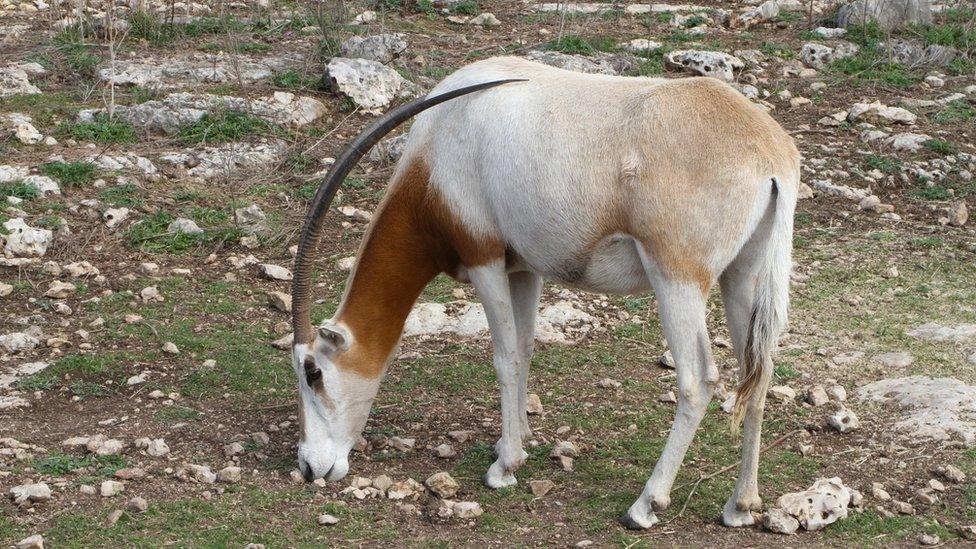Antelope species no longer extinct in wild after conservation efforts
- Published
- comments

Scimitar-horned oryx are a kind of antelope species
A kind of antelope which had become extinct in the wild, has now been downgraded to Endangered, as a result of a successful breeding programme.
Scimitar-horned oryx were able to be reintroduced in the African country of Chad.
Different organisations from around the world worked together on the project including the Environment Agency of Abu Dhabi (EAD) and international conservation charity Zoological Society of London (ZSL).
The animals' reintroduction is also seen as good for the environment.
The scimitar horned oryx, (Oryx dammah), also called the Sahara oryx, was once widespread across North Africa, but in the 1980s their numbers began to decrease rapidly.
This was largely due to them being hunted for their horns and meat. In 2000, the species was declared Extinct in the Wild by the IUCN Red List of threatened species.
Now the antelope have become the first species from ZSL's Extinct in the Wild global initiative to be down-listed and that's because of their recent breeding success in the wild.
How were the Scimitar-horned oryx saved from extinction?

The recovery project started in 1985 when ZSL worked with organisations, including the Sahara Conservation Fund (SCF), to carry out research into how possible the project was, and how to ensure a successful reintroduction of the antelope into the wild.
Animals from leading conservation zoos - including ZSL's Whipsnade Zoo - were also part of the founding herd.
The antelope are now thriving within Chad's Ouadi Rimé, at the Ouadi Achim Faunal Reserve.
The programme has seen 510 scimitar-horned oryx young born in the wild.
The IUCN Red List down-listing from extinct to endangered recognises that the population is not only successfully established, but that it is capable of sustaining itself in the future.
Conservationists say that the comeback represents the restoration of not just a species, but a whole ecosystem.
This is because the animals play an important role in maintaining grasslands in their native Chad through grazing and preventing the spread of desertification.
Their reintroduction is seen as an example of a nature-based solution helping tackle local impacts of climate change.
At a time when biodiversity is being lost at unprecedented rates, the return of the scimitar horned oryx can give us hope for other species whose fate is - quite literally - in our hands.

The scimitar-horned oryx's comeback was not an overnight success story, with ZSL's senior conservation biologist Tim Wacher, emphasising that it is the result of a long-term conservation effort for the species.
He said: "All Saharan antelope species are severely threatened, but this project is proof that with the right will and resources, we can secure a future for them all."
- Published3 January 2023
- Published25 August 2023
- Published3 March 2023

